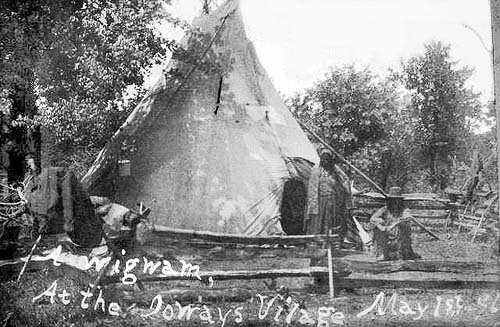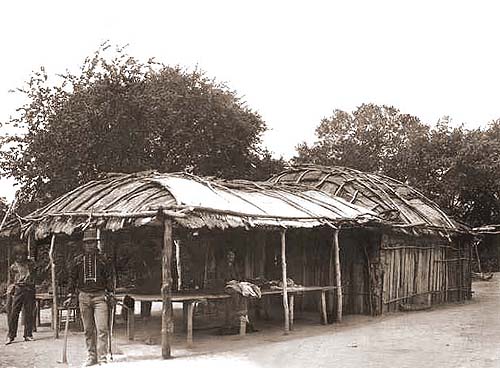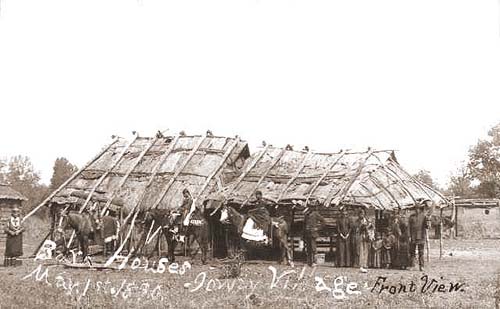
Ioway Houses and Lodges
Chibothraje
The Ioway used many types of structures, with three of the
most common pictured here. The tipi (called a "wigwam" below) was called
chibothraje (chee-BOW-thrah-jay) (house-standing-upright) or
chehachi (chay-HA-chee) (buffalo-hide-house). The little rail fence
would have served as a barrier for horses. The photo below was taken at the
Ioway village in Oklahoma, May 1, 1890.

Wigwam at the Ioways Village, May 1st 1890
Chakiruthan
The Ioway house below is an adapted form of a
chakiruthan (chah-KEE-roo-thahn) (house-tied-together, referring to the
lashing of the framework with bark strips). The walls here are of milled wood,
but older wall types would have been bark covered like the roof. The covered
area with open sides is a irowitan (ee-RO-wee-tahn), an arbor or ramada.
People would have used the house for sleeping, storage, or shelter during the
night or bad weather. In good weather and during the day they would have
preferred the arbor to do their work and to visit. Another shot from Oklahoma
in the 1890s.

Nahachi
The large house below is a council house, used for large
gatherings, such as important tribal meetings or ceremonies. This one was made
by joining two square, gable-roofed bark houses called nahachi
(nah-HA-chee) (tree-bark-house). The photo was taken May 1, 1890 at the old
Ioway village near Perkins, Oklahoma.

Bark house, May 1st, 1890, Ioway Village, Front View
Return to top
Return to Ancestral Ways of Life page
Return to Culture main page
|